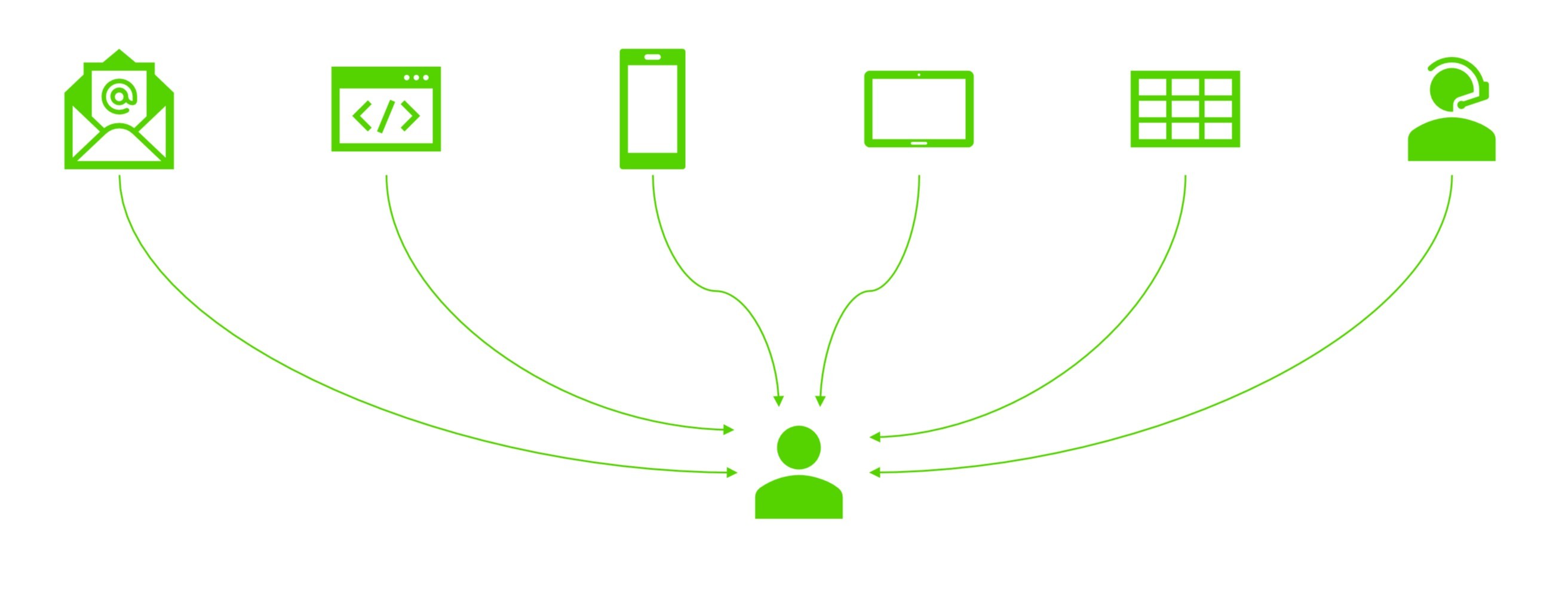
As marketers, our goal is to optimize conversions within our organizations. In this article, we discuss how to create an optimization strategy that increases good conversions and reduces bad ones.
Interactions
Hundreds of millions of interactions take place against millions and millions of brands every second of every day. What we as marketers should always remember is that a customer's journey is made up of hundreds of interactions that are occurring on several different planes. Whether they be online or offline, onsite or offsite, marketing-intended or unintended, they all play a role in leading customers to conversions.

Conversions
It is our goal as marketers to have a positive impact in optimizing conversions within our organizations. Now, a conversion can be good or bad. While conversions are positive in nature most of the time, it is important to remember that bad conversions exist too. A customer choosing to cancel a subscription is an example of a bad conversion.

One thing that remains true about conversions is that if the number of conversions goes up or down in a certain period, the business is either delighted or concerned.
In a bid to optimize conversions, we as marketers create touchpoints.
Touchpoints
Marketers create touchpoints in a bid to optimize, create or deter conversions. Not every customer interaction is a touchpoint; rather, those interactions that have taken time or come at a cost should be regarded as a touchpoint. For every touchpoint a marketer creates, it is of the utmost importance that the performance of the touchpoint is measured.
Touchpoints in a customer journey can include, but are certainly not limited to:
- Offline events
- Paid Search Campaigns
- Social Posts
- Display Advertising
- Direct Mail
- Email Marketing
- Blogs
- Videos
- In-store visits
- Target Keywords (SEO)
- Contact centers
- The list goes on.
What makes measuring all of these different types of touchpoints difficult for the marketer is that it is rarely a single touchpoint that is solely responsible for the causation of a conversion. A customer journey to a conversion can often be a unique series of touchpoints that are hit across a multitude of channels. The touchpoints are a team working towards a common goal, and to measure the efficiency of touchpoints marketers look to attribution.
Attribution
Marketers use attribution as a framework for analyzing which of those touchpoints should receive credit for a conversion. There are many different attribution “models” that distribute a conversion’s value to each touchpoint differently.
There is not a single attribution model that is most effective. Different models suit different purposes, and factors such as average time to purchase or type of conversion may cause one model to be more effective than another.
Many attribution tools fall short in accounting for ALL the touchpoints in a customer’s journey. When reporting through digital focused analytic tools, quite often we look at things by channel, but we don't consider on-site content (i.e. blogs, videos, hero banners) or offline events (i.e. phone calls, conferences, direct mail).
By comparing different attribution models, we can begin to understand the importance of touchpoints, the channels in which they occur, and their impact on the entire customer journey.
When attribution is done properly, it becomes a key source for personalization strategy.
Personalization
When looking at the key contributing touchpoints across your customer journeys, an indicator of which touchpoint should be surfaced and when may become apparent.
Personalization should always be done with a business outcome in mind. Therefore, the user segment to be targeted and the conversion to be optimized should always be front of mind when designing a personalization tactic.
There are three key components to a personalization tactic: the user segment, the call to action, and the placement.
Defining User Segments
It is important that when we are defining user segments for personalization that we are able to determine not only who someone is, but also where they might be in a particular journey.
For example, if we were targeting prospects for business services, it is simply not good enough to put them into a single user segment. Instead, we need to break that segment into journey stages. These may include awareness, research, decision, and so on.
When defining user segments, utilizing every interaction—whether it is online or offline—to target a user becomes crucial. The ability to identify users based upon cross-channel interactions is well within reach of most marketers in medium-sized businesses and upwards.
Determining a Call to Action (CTA)
When determining the right call to action for a particular user segment, we can often find ourselves returning to our attribution models to determine the appropriate engagement we want a user segment to take.
Once we have determined an appropriate call to action for the personalization tactic, the next step is to choose how and where that message is delivered.
Placement of Personalized Content
For personalization to be seen, it must be effectively placed. Unfortunately, placement is not always most effective on the website, which is where many marketers focus their personalization efforts. Sadly, as much as we would like to think otherwise, our customers are not spending time on our website unless there is a reason.
Personalization campaigns that are most effective will often span channels, from online to offline, from offsite to onsite. It is important that your personalization platform can provide such experiences. Perhaps a prospect has done their research and is no longer visiting the website. This would call for an approach that would revolve around offsite or even offline messaging—delivering content via proactive outreach.
Measuring Personalization
With personalization in place, it becomes important to continually measure its effectiveness.
Firstly, we have to see whether the personalization is being delivered to its target user segment, and in what numbers? For experiences where personalization exists, what is the breakdown of personalized experiences versus that of the default?
Secondly, we look at what impact that personalization is having against the target conversion(s) for each targeted user segment.
These two conditions will yield one of four outcomes:
- Low Reach, Low Conversions: We are not delivering enough experiences yet in order to determine whether or not the personalized experience is effective. Either alter the user segment to target a broader audience, or wait for further data to be collected.
- Low Reach, High Conversions: The personalization is effective; however, the reach is low. This may be due to a small user segment, or one that is incorrectly defined. If necessary, revisit user segment definition.
- High Reach, Low Conversions: The messaging is not resonating with the target user segment, or the user segment is incorrectly defined. Revise both the user segment definition and the personalized content and try again.
- High Reach, High Conversions: This is personalization utopia! There is a sufficient and high enough reach for the targeted user segment, and the conversion rate is significantly higher than that of a default experience.
Conclusion
With the right systems in place, in combination with methodical processes, a conversion optimization practice built with continual improvement in mind can be achieved. It is important to recognize that before any personalization efforts take place, the appropriate measurement of touchpoints and their attribution towards conversions (business objectives) is required.
It is paramount that a multi-channel view is taken toward both touchpoints and their attribution, as well as the delivery of targeted personalized messaging. We must always be mindful of who someone is, as well as where they may be in their journey.
When we measure our optimization efforts, we must stick to the two key metrics that matter: the reach of efforts and their impact.
Jay Sanderson
Jay Sanderson is a seasoned digital strategist and practitioner, with a passion for helping businesses achieve growth by exploiting the benefits of marketing technology.